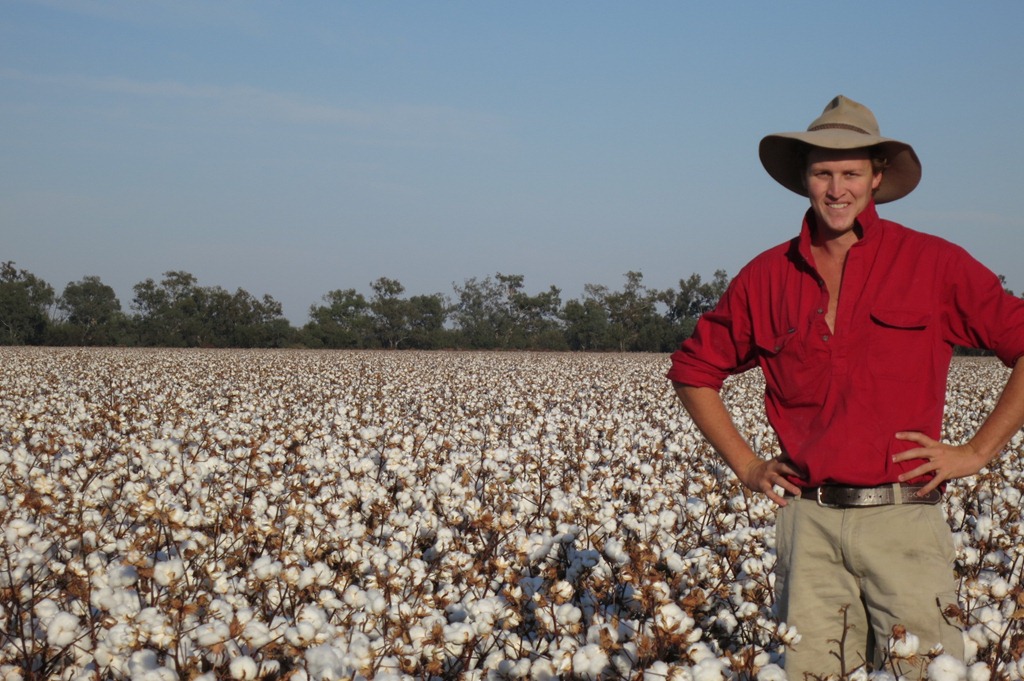
| Well-stocked reservoirs are buoying hopes for a large Australian cotton crop, despite the dry weather which has afflicted winter grains – and which is providing extra area for sorghum sowings.
Cotton output in Australia - the third-ranked exporter of the fibre after the US and India – will hit 960,000 tonnes (4.39m bales) in 2017-18, Abares said in its first full estimates for the country's summer crops. A harvest at that level would be the third largest on record in Australia, exceeding the 935,000-tonne result estimated for 2016-17. And it would defy expectations of a sharp drop in seedings, with 2017-18 area pegged at 430,000 hectares – a fall of 23% year on year. Dryland vs irrigated However, the expected decline disguises a sharp difference in sowings expectations on irrigated land, which offers higher yields, and that without access to stored water, where Australia's dryness is expected to deter plantings. Indeed, Abares forecast cotton area planted on dryland plunging by 73% to 56,000 hectares "in response to low levels of soil moisture". By contrast, area planted to irrigated cotton was forecast rising by 7% to 374,000 hectares "as a result of an increase in the supply of irrigation water and favourable returns from growing irrigated cotton compared with alternative crops". Reservoir levels – at 67% full in cotton-growing regions as of late August, up 11 points year on year - are still being buoyed by the spring rains last year which sent winter wheat production to record levels, before the latest drought struck. Abares forecast the average Australian cotton yield soaring 33% in 2017-18, "because of an expected rise in the share of area planted to irrigated cotton". 'Strong incentive' On sowings terms, sorghum will be the big winter among Australian summer crops, with production seen soaring 81% to 1.84m tonnes, on area seen up 54% at 596,000 hectares. In part, the revival in the grain's popularity in planting programmes is a reflection of the grain's greater drought resistance, making it a lower risk option for non-irrigated land than cotton. "Dryland cotton has higher moisture needs than grain sorghum," Abares said. Furthermore, sorghum area is being boosted by knock-on effects of the poor prospects of winter cereals – which has freed up extra area for sowing, as some crops are abandoned, and raised hopes for feed grain prices too. In New South Wales, with Queensland one of Australia's two main sorghum-growing states, "availability of fallow land is high due to the poor winter cropping season in large parts of the cropping region in [the] north-west. "This, combined with an increase in feed grain demand will provide a strong incentive to plant grain sorghum." 'Spectacular transformation' However, Abares cautioned that its summer crop forecasts were based on the "assumption that spring and early summer rainfall will be adequate for planting grain sorghum", as well as dryland cotton. In New South Wales, "soil moisture levels are currently below average and not ideal for summer crop planting". Peter McMeekin, origination manager at crop merchant Nidera Australia, said that for farmers "the deteriorating winter crop optimism has given way to summer crop hope. "Hope that the dry winter will turn into a wet spring and a possible summer crop plant will come to fruition." In South Australia's Eyre Peninsula, recent rains had brought a "spectacular transformation" to winter grains, Mr McMeekin said, if adding that "the crop is very late and patchy in many areas and below-average production is the most likely outcome". |
Source: http://www.agrimoney.com/news/hangover-from-2016-rains-boosts-australia-cotton-hopes-into-2018--11009.html

